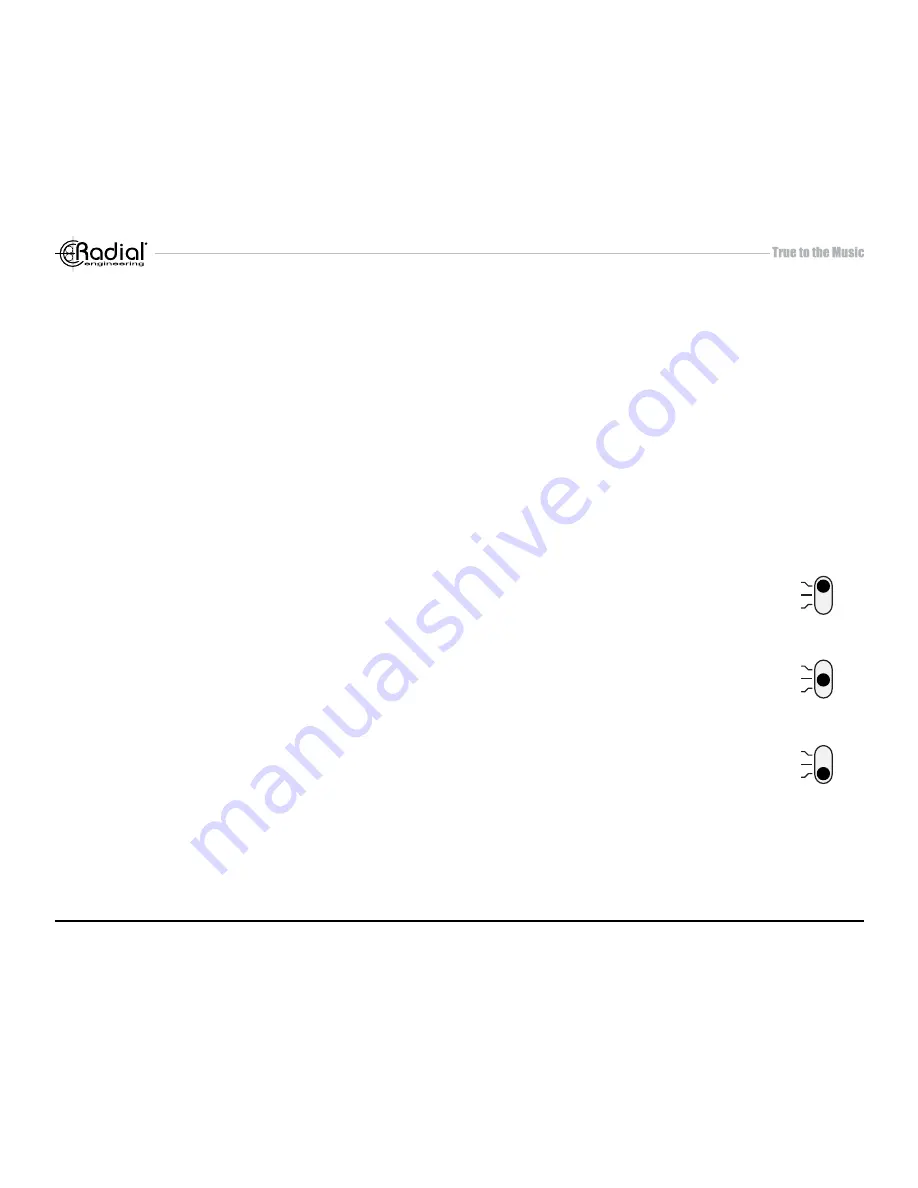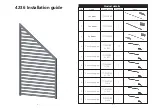
Radial Engineering Ltd.
PZ-DI™ User Guide
overvIew
Upon first look, the Radial PZ-DI appears to be similar to most other direct boxes. This is true. You can use the PZ-DI
just as you would a Radial J48 or one of our other direct boxes. Where it differs is that it has been optimized for use with
piezo-electric pickups as these are the most problematic of all. A three position load switch lets you match the PZ-DI’s
input with the type of pickup you are using. This eliminates the peaks, squawk and limited bandwidth of the transducer for
a more natural sound. Since the PZ-DI will likely be used on acoustic or orchestral instruments, we have also enhanced
the control set to enable you to precisely control the low end, warm up the top end and help eliminate feedback due to hot
spots on stage. And somehow we still managed to make it easy to use! So let’s get started...
adjusting the load
One of the coolest features on the PZ-DI is the load adjustment switch. This works with the PAD to let you interface a wide
variety of pickups or sources to both maximize the frequency response and minimize distortion. There are three settings
to choose from. Set the load switch to match the type of pickup or instrument you are using.
220k for magnetic pickups:
Over the years, we have found that 220k-ohms on a solid state buffer provides a similar
sound to connecting to a 1 meg-ohm input on a tube guitar amp. The Radial J48 employs this input impedance for this
reason and the PZ-DI follows suit. So if you are connecting a Fender Jazz bass to the PZ-DI, set the load to 220k.
10 meg for piezos:
Most manufacturers employ a 1 meg-ohm input on their interfaces. This gives you relatively
high input impedance without too much noise. The problem is that piezo transducers tend to sound very peaky,
squawk and end up losing bottom-end unless they see a much higher load. The 10 meg-ohm input on the PZ-DI
really makes them sound marvellous.
1 meg for traditional DIs:
Since Leo Fender made his first amps, most companies have followed suit with a 1
meg-ohm input impedance. This traditional load will brighten up a Fender bass or give you more air if you are going
to reamp using your Les Paul. You may also find this will give you the tone you want when using the PZ-DI on an
old Rhodes piano.
Pad for high output instruments:
When you engage the PAD, the PZ-DI’s input sensitivity will be reduced by 15dB and
the load will drop to 50k-ohms making it ideal for buffered devices such as digital keyboards, drum machines or active
basses and guitars. The lower impedance reduces susceptibility to noise while the lower input sensitivity will prevent high
output devices from overloading the PZ-DI’s circuit - resulting in less distortion.
3
1M
10M
220K
LOAD
SELECT
1M
10M
220K
LOAD
SELECT
1M
10M
220K
LOAD
SELECT
Summary of Contents for PZ-DI
Page 2: ......






























